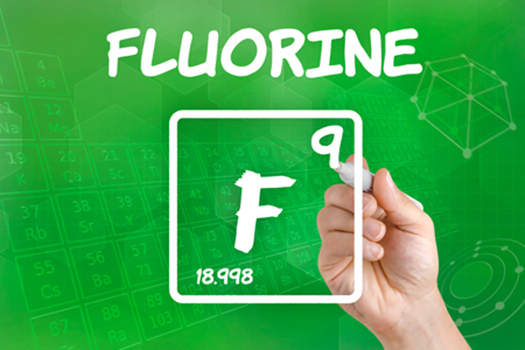Fluoride toxicity – protect yourself with selenium

Excess fluoride may increase your risk for 23 different cancers, lower your child’s IQ and school performance and increase oxidative stress throughout your body. But new research has shown that the mineral selenium plays a key role in detoxifying excess fluoride, restoring the body’s antioxidant capacity and even speeding the elimination of fluoride from the body.
The toxicity of excess fluoride
Evidence has been accumulating for decades that fluoride is both toxic and carcinogenic to humans. An analysis of WHO cancer statistics from 1978-1992 showed that Americans living in areas with “optimal” water fluoridation had increased risk of cancer at 23 different sites in the body. This was echoed by further research from Japan showing that water fluoridation significantly increased the risk of uterine and liver cancers. More recently, a study from Harvard showed that childhood exposure to higher levels of fluoride may increase osteosarcoma risks in males by up to 546%. Despite this evidence, mainstream medicine has remained in denial of the fluoride-cancer link largely because there was no obvious mechanism of carcinogenicity. But new research out of China has finally provided this missing link. It turns out that excess fluoride strongly disrupts the body’s internal antioxidant system and ability to withstand oxidative stress.
Fluoride – a potent pro-oxidant
Worldwide, over 200 million people across 25 countries are living with serious chronic fluorosis due to high levels of fluoride in their groundwater and/or contamination of their food and air due to pollution (i.e. from burning high-fluoride coal). Endemic fluorosis is widespread in China, which is why Chinese doctors are now heavily researching fluoride toxicity. In a recent landmark study, researchers showed that citizens living in high fluoride areas had extremely depressed levels of the body’s three most important endogenous antioxidants: superoxide dismutase, catalase and glutathione peroxidase, compared to those living in low fluoride areas. Oxidative damage is a well-established risk factor for cancer. Therefore, since excess fluoride cripples the body’s ability to defend against oxidative stress, it may also increase cancer risk as a secondary effect.
Selenium – nature’s antidote for excess fluoride
The good news is that the same Chinese researchers made another equally important discovery. Citizens living with high levels of fluoride and also high levels of selenium were measured to have normal levels (or even higher) of all three key endogenous antioxidants. This seems logical since selenium is actually contained in glutathione peroxidase, one of the three key antioxidants. Importantly, these people also showed normal levels of MDA (malondialdehyde), a key marker of oxidative damage. In contrast, people in the high-fluoride areas had MDA levels 475% greater.
The ability of selenium to protect against fluoride toxicity has been further confirmed in lab animals. Selenium has been shown to stop damage to the heart, liver, kidneys, and ward off the severe mental deterioration that accompanies excess fluoride. One study also showed that selenium increased the rate of elimination of fluoride in the urine.
The takeaway from this is if you’re concerned about how much fluoride you might be getting, you should be equally concerned about the adequacy of your selenium intake. The RDA for selenium is 55 micrograms daily for adults, but many natural health practitioners recommend 100-200 micrograms. According to the NIH, the upper tolerable intake for selenium is 400 micrograms daily. Natural sources of selenium include nuts, seeds, fish, meat, and whole grain products. A comprehensive listing of the selenium content of foods may be found in the last two references below, sorted alphabetically and by selenium content, respectively. For best absorption, avoid taking selenium with zinc or high dose vitamin C.
Sources for this article include:
- http://www.ncbi.nlm.nih.gov/pubmed/11512573
- http://www.ncbi.nlm.nih.gov/pubmed/9002384
- http://www.ncbi.nlm.nih.gov/pubmed/16596294
- http://www.ncbi.nlm.nih.gov/pubmed/16834990
- http://www.ncbi.nlm.nih.gov/pubmed/19652462
- http://www.ncbi.nlm.nih.gov/pubmed/21976813
- http://www.ncbi.nlm.nih.gov/pubmed/12525083
- http://ods.od.nih.gov/factsheets/Selenium-HealthProfessional/
- https://www.ars.usda.gov/SP2UserFiles/Place/12354500/Data/SR24/nutrlist/sr24w317.pdf
- https://www.ars.usda.gov/SP2UserFiles/Place/12354500/Data/SR24/nutrlist/sr24a317.pdf

DISCLAIMER: All information on this website, including research articles, is for information purposes only and is not meant as a recommendation to buy or use any nutritional supplement, healthcare product or service of any type. Ethan Evers does not provide medical advice directly or through recommended or linked materials, articles etc. All matters regarding your health require medical supervision and advice from an appropriately licensed medical practitioner.






